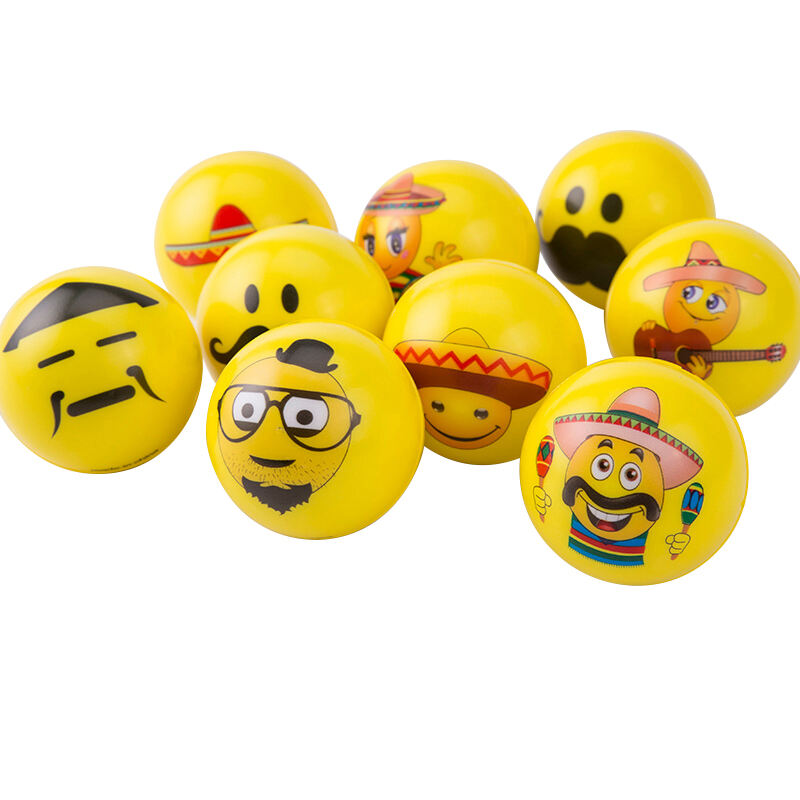Cognitive and Creative Benefits of Educational Toys
Enhancing Problem-Solving Skills
Toys designed for education really help boost those all-important problem solving abilities in kids. These kinds of toys get little ones thinking deeply about things and coming up with creative ways to tackle whatever challenge comes their way. When kids play around with these educational items, they actually pick up some pretty useful techniques that work well when facing actual problems later on. The American Academy of Pediatrics did some studies showing that learning through play actually helps develop brain power, giving children the tools they need to solve problems every day. Take puzzles and building blocks for example. Kids working on these have to figure out different approaches, try stuff out until something works, and this whole process builds what experts call a growth mindset along with the ability to bounce back after hitting roadblocks.
Fostering Imagination and Innovation
Let's face it, when kids get lost in make-believe worlds, they're actually developing serious creative muscles. Educational toys really do spark imagination and lead to innovative thinking down the road. Take those colorful art sets or those wooden blocks that stack into anything from castles to spaceships. These items give little ones freedom to paint outside the lines (literally) and build whatever comes to mind. According to research from the Creative Education Foundation, this kind of playful exploration actually strengthens something called cognitive flexibility which basically means being able to think around corners. When children dive into role play with costumes or construct elaborate structures from cardboard boxes, they start weaving stories and solving problems in ways adults might never consider. What makes all this so valuable? Kids learn early on how to imagine alternatives and come up with fresh approaches to challenges, skills that stick with them long after childhood.
Early Exposure to STEM Learning
Toys designed for education play a big role in getting kids exposed to STEM subjects at an early age. They teach little ones about science, tech, engineering and math through play rather than boring lectures. Research from the National Association for the Education of Young Children shows that when kids get involved with STEM stuff early on, they tend to do better academically down the road. Think about those colorful science experiment sets or board games where kids learn to code while having fun. These kinds of toys sneak complicated concepts into activities that feel like regular playtime. As a result, children pick up important skills without even realizing it, which helps prepare them for life in our high tech world today.
Physical Development Through Play
Fine Motor Skill Refinement (e.g., Mochi Squishy Toys)
Children need good fine motor skills to handle everyday things like holding pencils or eating with utensils. Mochi squishy toys actually work pretty well for helping build those skills. Most kids love squeezing these squishy little blobs because they're so soft and malleable. When kids grab,捏, and shape them, their hands get stronger and more coordinated over time. Research shows that playing with textured materials helps strengthen finger muscles and improves how well eyes and hands work together. Parents who sit down with their kids and do simple games with these toys see real progress in their child's ability to control small movements. What's great about this approach is that kids don't even realize they're practicing important developmental skills while having fun with something they find entertaining.
Gross Motor Activities with Baby Play Gyms
When it comes to babies, building those big muscle movements is really important for how they grow physically and learn to control their bodies. Play gyms are super helpful here because they give little ones all sorts of chances to crawl around, reach out for things, and grab onto stuff. Studies done by the CDC show that developing these bigger motions isn't just good for coordination but actually affects overall health too. Parents who spend time playing with their kids on these activity mats can watch closely as their child hits key developmental checkpoints. Making these kinds of activities part of regular day to day life helps set up a safe space where babies can mess around and get better at moving their bodies, which lays down solid groundwork for all sorts of physical accomplishments later on.
Age-Specific Challenges for 3- and 5-Year-Olds
Toys made for different age ranges really help kids between 3 and 5 develop both mentally and physically. Take 3 year olds for example most of their toys focus on simple things they can grasp easily, helping them discover new stuff while building those early learning blocks. Older kids around 5 tend to get toys that throw bigger challenges at them, ones that need some thinking through and hand eye coordination too. Playing with these age appropriate puzzles or games does more than just build skills it actually teaches kids how to play on their own and bounce back when something doesn't work out right away. Kids who face these specially designed challenges start figuring out how to deal with setbacks without getting too frustrated, something parents know is super important for growing up healthy and strong.
Nurturing Social and Emotional Intelligence
Cooperative Play and Teamwork
Toys designed for collaborative play actually help kids learn about sharing and working together. Studies show that when children engage in these types of activities, their social abilities get better over time, along with how well they understand emotions. Think about board games where everyone has to take turns or those puzzle sets that need multiple hands to complete. These kinds of experiences go beyond just having fun together. They really do build important life skills as kids talk through disagreements, come up with solutions as a team, and figure out who does what during group tasks. The benefits extend far beyond the playground too, helping them grasp what it means to be part of a community from an early age.
Role-Playing for Empathy Development
Playing with role play toys gives kids a chance to try out different characters and builds their empathy muscles along the way. According to research from the American Psychological Association, when little ones pretend to be someone else during playtime, it actually helps them get better at seeing things from other people's viewpoints and recognizing different feelings. This kind of imaginative play lets children work on being nice and compassionate toward others something all parents want to see develop. Take regular old dolls or those plastic action figures most kids collect they're not just toys but actually useful tools for practicing how to handle tricky social moments. Kids learn what to do when someone is sad, how to share properly, or even deal with conflicts without fighting.
Emotional Regulation with Sensory Toys
Sensory toys act as calming tools that help kids learn to control their emotions through touch. According to research from The Child Mind Institute, when children engage with sensory materials during playtime, they tend to feel less anxious and concentrate better these are really important parts of growing emotionally healthy. Parents who include things like squishy stress balls or items with different textures in their child's day to day life often notice improvements in how the kid handles strong feelings. These kinds of toys let children physically interact with their emotions, which helps them understand what they're feeling and why. Many families find that regular use of sensory items makes it easier for kids to stay calm and balanced throughout the day.
Choosing Age-Appropriate Educational Toys
Educational Toys for 3-Year-Olds: Skill-Building Foundations
Three year olds hit a really important phase in building those core skills, and the right toys can make all the difference during this time. Look for items that help with counting, recognizing colors, and figuring out shapes since these things matter so much at this age. Puzzle sets and wooden blocks work wonders because kids actually enjoy playing with them while hitting key developmental checkpoints. Parents shopping for toys would do well to check the age recommendations on packaging first thing. A toy marked for three year olds typically means it's been tested against what most kids need at this stage. Going for these specially labeled educational toys creates space for little ones to learn without even realizing it, letting those early abilities grow in ways that feel natural rather than forced.
Educational Toys for 5-Year-Olds: Complex Problem Solving
At around five years old, kids need toys that push them a bit harder than before, ones that get them thinking through problems instead of just playing around. Board games where they have to follow turns and make decisions, or building kits that require putting pieces together in specific ways work really well here. These kinds of activities help build those important brain skills like figuring things out and making good choices. Most experts agree that what matters most isn't just meeting some official standard, but watching how children interact with different materials as they learn to count, sort shapes, and understand basic cause and effect relationships. Parents should look for toys that don't become obsolete after a few months either. A good quality puzzle set or strategy game might start off simple enough for little hands, but as kids grow older, they can tackle more complicated versions of the same game, keeping it relevant while still being educational throughout multiple stages of development.
Infant Toys: Sensory Exploration (0-12 Months)
Babies really benefit when they play with toys that stimulate their senses, which helps them develop from the get go. Most pediatricians suggest getting toys that have different textures, make noises, and come in bright colors since these things grab baby attention and help brain growth. The first year of life is super important for this kind of sensory stimulation because babies are constantly exploring what feels good and what doesn't. Parents should definitely pay attention to what materials go into making these toys, especially since little ones tend to put everything in their mouths and chew on stuff. Safe, non-toxic materials matter a lot here. When babies can explore freely without danger, they satisfy their natural curiosity while building those crucial sensory and thinking abilities that will serve them well later on.
Table of Contents
-
Cognitive and Creative Benefits of Educational Toys
- Enhancing Problem-Solving Skills
- Fostering Imagination and Innovation
- Early Exposure to STEM Learning
- Physical Development Through Play
- Fine Motor Skill Refinement (e.g., Mochi Squishy Toys)
- Gross Motor Activities with Baby Play Gyms
- Age-Specific Challenges for 3- and 5-Year-Olds
- Nurturing Social and Emotional Intelligence
- Cooperative Play and Teamwork
- Role-Playing for Empathy Development
- Emotional Regulation with Sensory Toys
- Choosing Age-Appropriate Educational Toys
- Educational Toys for 3-Year-Olds: Skill-Building Foundations
- Educational Toys for 5-Year-Olds: Complex Problem Solving
- Infant Toys: Sensory Exploration (0-12 Months)

